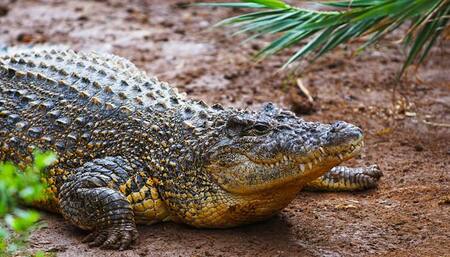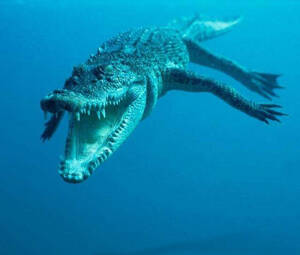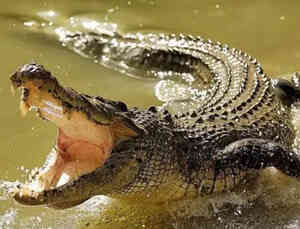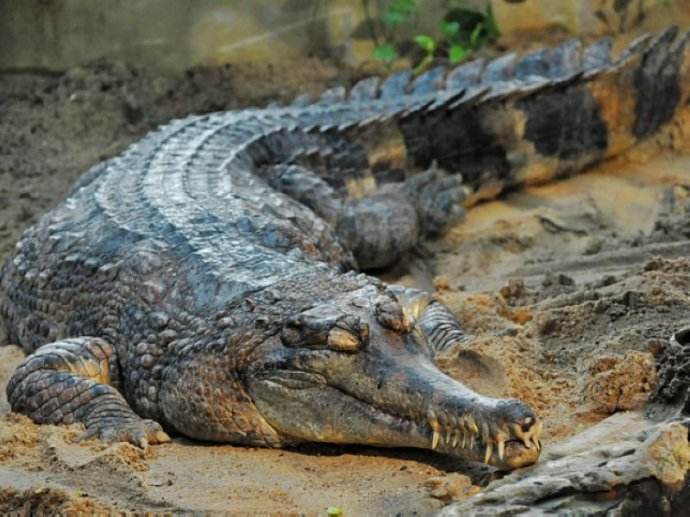Alligator sinensis
IUCN
LCBasic Information
Scientific classification
- name:Alligator sinensis
- Scientific Name:Alligator sinensis ,Chinese Alligator,Alligator, Chinese alligator, earth dragon, pig dragon
- Outline:Crocodilia
- Family:Crocodilians Alligatoridae Alligator
Vital signs
- length:1.5—2.1m
- Weight:30-45kg
- lifetime:70-80years
Feature
It is endemic to China, has a flat head, short and thick limbs, a long and laterally flattened tail, scales with more granular and banded patterns, and earth-colored eyes.
Distribution and Habitat
Distributed in the middle and lower reaches of the Yangtze River in China (Jiangsu, Zhejiang, Anhui).
It has the habit of hibernation and lives in lakes and swamps in plains, ponds in hilly areas and other low-lying wetland environments.
Appearance
The snout is short and flat, the limbs are short and thick, the 5 toes of the forelimbs are not webbed, and the toes have claws; the 4 toes of the hind limbs are semi-webbed. The back is dark brown or dark yellow, the abdomen is gray, the tail is long and flattened, and there are gray-black or gray-yellow stripes.
Details
The Yangtze alligator, Alligator sinensis (Fauvel, 1879), was called tuó in ancient times, and is commonly known as "earth dragon" or "pig dragon" in the folk. It is a small crocodile unique to China and is listed as a national first-class key protected wild animal. The Yangtze alligator likes quietness and often hides in caves during the day and goes out to forage at night. However, it sometimes comes out during the day, especially likes to bask in the sun on the shore and beach near the cave. It often closes its eyes, crawls motionless in a semi-sleeping state, giving people the illusion of slow movement.
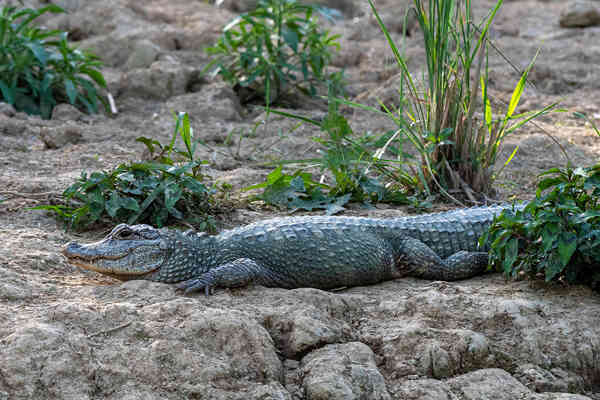
The Yangtze alligator has a superb ability to dig holes. Its head, tail and sharp claws are all its tools for digging holes. Its caves often have several openings, some in the reeds and bamboo forests on the shore, and some at the bottom of the pond. There are entrances and exits and vents on the ground. There are also side openings that adapt to various water levels. The cave is winding and crisscrossed, just like an underground maze.
The Chinese alligator has a large appetite and can store a large amount of absorbed nutrients in its body. Because it has a strong ability to withstand hunger and can survive a long hibernation period, the Chinese alligator can go without food for a long time. The Chinese alligator has a relatively docile temperament and generally does not actively attack people. Like other animals, it will only have an aggressive tendency when it is irritable during the breeding season, but this attack usually does not cause substantial harm to people.
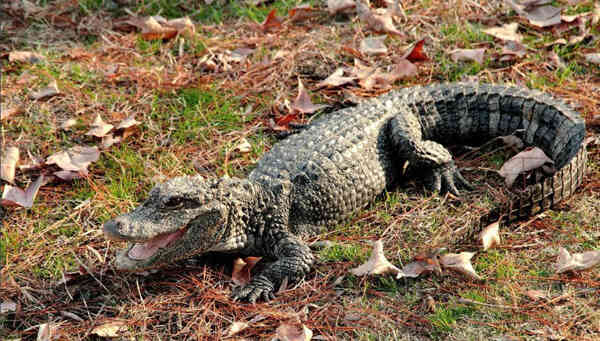
The Chinese alligator is good at digging holes for nests, and often builds nests at reservoir dams, which often causes reservoir leakage and brings certain harm, but it can loosen some compacted soil, which is conducive to the growth of plants; its abandoned caves are often used by other animals. The Chinese alligator is a carnivorous species, at the top of the food chain, and plays an important role in maintaining the balance of the food chain. The Chinese alligator feeds on fish, shrimp, mollusks and insects.
The Yangtze alligator is an ancient reptile that survived from the Mesozoic Era. According to research, the skeletons of crocodiles and dinosaurs are very similar, and the body surface is covered with neatly arranged scales, indicating that crocodiles and dinosaurs have a certain affinity. Therefore, studying the Yangtze alligator has a certain guiding role in studying the origin and evolution of dinosaurs and the situation of the Mesozoic reptile era.
At present, the survival status of the Yangtze alligator is very endangered, with a total population of less than 300 in the wild, of which less than 100 are adults. The loss and fragmentation of suitable habitats in the wild is the biggest threat currently facing the Chinese alligator, and is also the biggest obstacle to the natural recovery of its population and the reintroduction of artificially bred individuals.
In 1989, it was listed in the first level of China's "National Key Protected Wildlife List"

